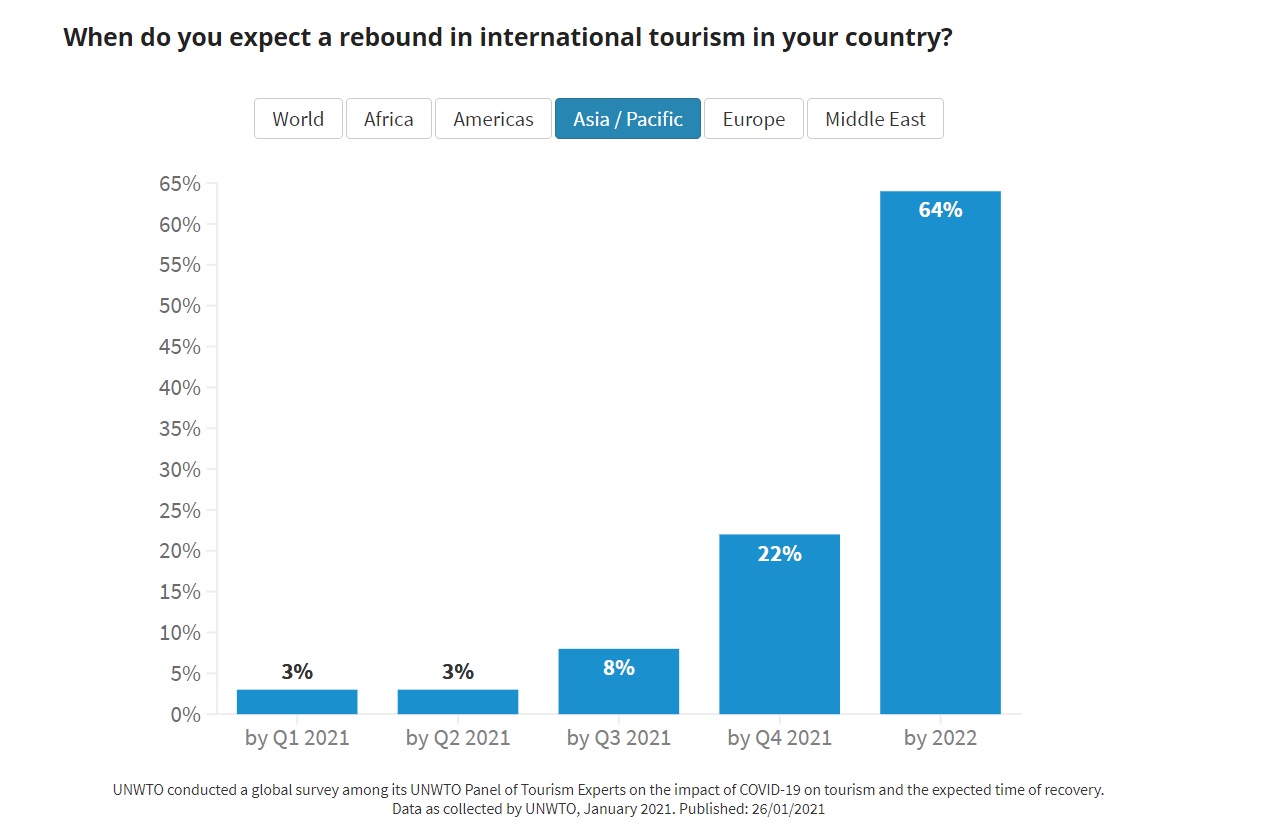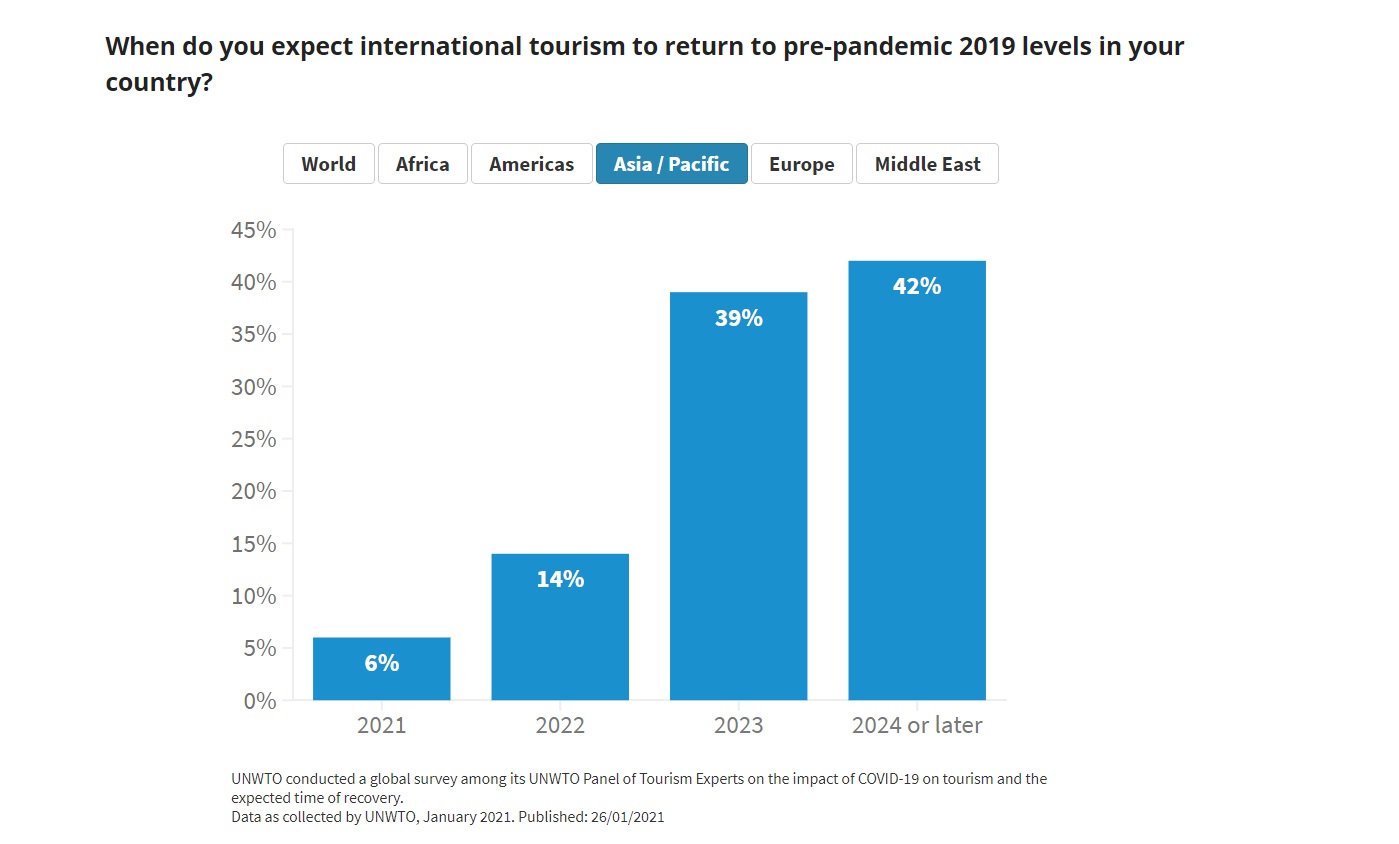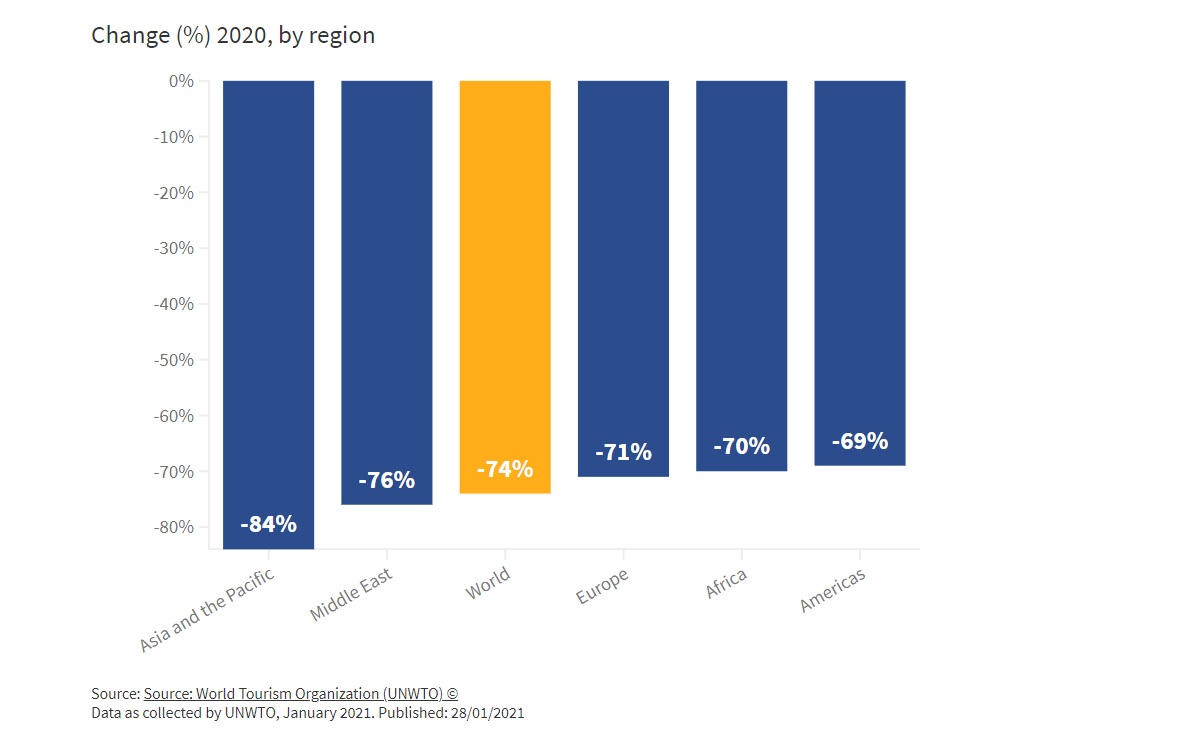|
Global tourism suffered its worst year on record in
2020, with international arrivals dropping by 74% according to the
latest data from the World Tourism Organization (UNWTO).
Destinations worldwide welcomed 1 billion fewer international
arrivals in 2020 than in the previous year, due to an
unprecedented fall in demand and widespread travel restrictions.
This compares with the 4% decline recorded during the 2009 global
economic crisis.
According to the latest UNWTO World Tourism
Barometer, the collapse in international travel represents an
estimated loss of USD 1.3 trillion in export revenues - more than
11 times the loss recorded during the 2009 global economic crisis.
The crisis has put between 100 and 120 million direct tourism jobs
at risk, many of them in small and medium-sized enterprises.

Due to the evolving nature of the pandemic, many
countries are now reintroducing stricter travel restrictions.
These include mandatory testing, quarantines and in some cases a
complete closure of borders, all weighing on the resumption of
international travel. At the same time, the gradual rollout of
COVID19 vaccines is expected to help restore consumer confidence
and eventually contribute to the easing of travel restrictions.
UNWTO Secretary-General, Zurab Pololikashvili, said,
�While much has been made in making safe international travel a
possibility, we are aware that the crisis is far from over. The
harmonization, coordination and digitalization of COVID19
travel-related risk reduction measures, including testing, tracing
and vaccination certificates, are essential foundations to promote
safe travel and prepare for the recovery of tourism once
conditions allow."
The latest UNWTO Panel of Experts survey shows a
mixed outlook for 2021. Almost half of respondents (45%) envisaged
better prospects for 2021 compared to last year, while 25% expect
a similar performance and 30% foresee a worsening of results in
2021.
The overall prospects of a rebound in 2021 seem to
have worsened. 50% of respondents now expect a rebound to occur
only in 2022 as compared to 21% in October 2020. The remaining
half of respondents still see a potential rebound in 2021, though
below the expectations shown in the October 2020 survey (79%
expected recovery in 2021).
As and when tourism does restart, the
UNWTO Panel of Experts foresee growing demand for open-air and
nature-based tourism activities, with domestic tourism and �slow
travel� experiences gaining increasing interest.

Looking further ahead, most experts do not to see
a return to pre-pandemic levels happening before 2023. In fact,
43% of respondents point to 2023, while 41% expect a return to
2019 levels will only happen in 2024 or later. UNWTO�s extended
scenarios for 2021-2024 indicate that it could take two-and-a-half
to four years for international tourism to return to 2019 levels.

Asia and the Pacific (-84%) - the first region to
suffer the impact of the pandemic and the one with the highest
level of travel restrictions currently in place - recorded the
largest decrease in arrivals in 2020 (300 million fewer). The
Middle East and Africa both recorded a 75% decline.

Europe recorded a 70% decrease in arrivals,
despite a small and short-lived revival in the summer of 2020. The
region suffered the largest drop in absolute terms, with over 500
million fewer international tourists in 2020. The Americas saw a
69% decrease in international arrivals, following somewhat better
results in the last quarter of the year.
A full overview of the latest global, regional and
sub-regional data can be found at the
UNWTO World Tourism
Barometer and the
UNWTO Tourism Recovery Tracker.
See latest
Travel Industry News,
Video
Interviews,
Podcasts
and other
news regarding:
COVID19,
UNWTO,
Outlook,
Forecast,
Mai Khao.
|
Headlines: |
|
|
